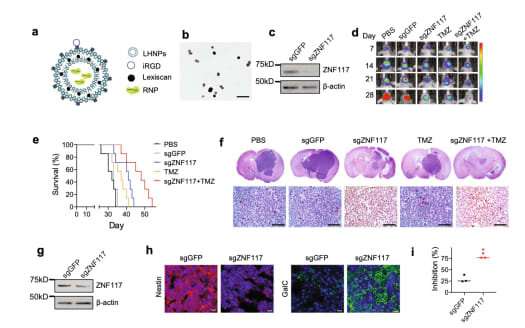New research identifies genes responsible for glioblastoma cell development

A recent research paper published in Nature Communications by a team led by Yale School of Medicine researchers finds a promising way to make brain cancer cells more susceptible to chemotherapy.
Glioblastoma is the most common malignant brain and CNS tumor, accounting for almost half of all cases. It's an aggressive disease, with no improvement in survival rates in the last three decades, despite advances in medicine. The overall five-year survival rate is less than four percent. One reason is that the drugs currently available don't efficiently kill the brain cancer cells. The only chemotherapy treatment available for glioblastomas is Temozolomide, but it does not kill cancer stem cells. By the time the stem cells have developed into mature cancer cells, they replicate very quickly, and drugs have a limited effect. However, recent research points to a promising breakthrough.
In the paper published in Nature Communications, titled "ZNF117 Regulates Glioblastoma Stem Cell Differentiation Towards Oligodendroglial Lineage," researchers found a way to trigger glioblastoma stem cells to mature into cancer cells, which can be killed through drugs such as Temozolomide. This approach would cause fewer side effects in patients and has been proven to be effective in treating other cancers such as leukemia.
The researchers first developed a novel technique to identify all the genes responsible for triggering glioblastoma stem cells to develop into mature cancer cells. Using an image-based genome-wide RNAi screen, combined with single-cell RNA sequencing, researchers observed the whole range of genes responsible for the development of brain cancer stem cells, rather than a predetermined set of genes, which was previously the case in genome-wide RNAi screen by itself.
The researchers identified the gene ZNF117 as a major regulator of tumor cells that develop into oligodendrocyte-like tumors from the screening. Suppressing the ZNF117 gene is a promising way to trigger cancer cells to develop into a more mature form, making them more susceptible to chemotherapy.
The findings were initially found in vitro but confirmed through mouse models.
"Brain cancer treatment has had a limited effect," says Dr. Jianbing Zhou, Ph.D., associate professor of neurosurgery at the Yale School of Medicine and lead author. "There's a lot of room for improvement. This research potentially suggests an innovative pathway to glioblastoma treatment."
Dr. Zhou says that while implementing these findings into drug form may take many more years, these findings can be used in conjunction with CRISPR technology, a therapy used for gene editing, to make chemotherapy more effective.
"The work described in this paper represents many years of steady and creative work," says Mark Saltzman, Goizueta Foundation Professor of Biomedical Engineering, Chemical & Environmental Engineering & Physiology at Yale School of Engineering and Applied Science and a contributor on the paper. "The paper describes a series of careful studies that step-by-step show how to go from identification of candidate genes to finding legitimate targets that can be used to alter the course of this deadly disease."
More information: Jun Liu et al, ZNF117 regulates glioblastoma stem cell differentiation towards oligodendroglial lineage, Nature Communications (2022). DOI: 10.1038/s41467-022-29884-3


















